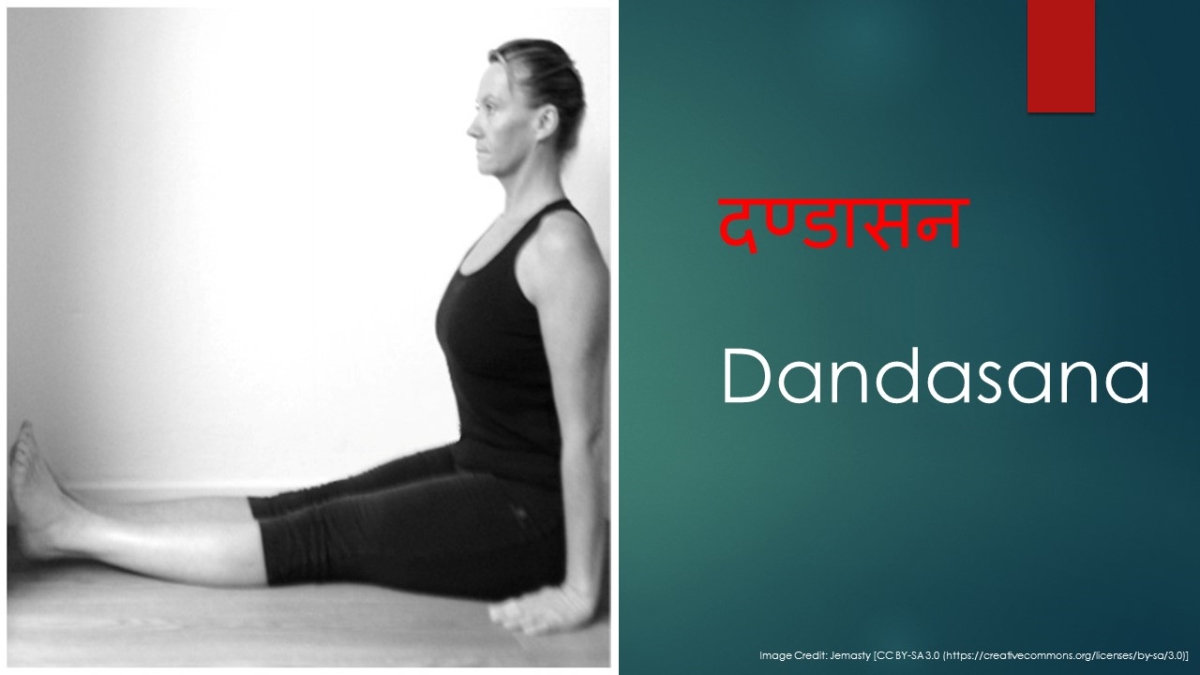Introduction
Dandasana is a simple sitting yoga posture. We have no reference in medieval yoga texts. Hence, this is a posture of recent origin. However, the nineteenth-century yoga text Sritattvanidhi describes a pose with this name. But it is a different version that differs from the one we know today.
Though this posture is a seated posture, it is not used for meditation or Pranayama. Moreover, this posture is the starting position for many other seated postures.
Postures like Merudandasana and Chaturanga Dandasana are popular among this group of Asanas.
Dandasana Information
| Pose Name | Dandasana |
| Sanskrit Name | दण्डासन |
| IAST | Daṇḍāsana |
| English Name | Staff Pose |
| Difficulty level | Basic |
| Origin | Modern |
| Type | Seated Posture |
Dandasana Meaning
In Sanskrit, Danda means a stick or staff. Asana means a sitting position. Therefore this posture gets the name Staff Pose in English.
Furthermore, the legs are put on the floor like a staff. That is why call this yoga posture by this name.
How to do Dandasana?
Precautions
It is not hard to perform a category that involves cumbersome twists and bends. So, there is no big risk in taking this posture for practice. Yet, those who have issues either in their back or in their arms should take care of.
Preparatory Poses
As we have seen already, it is fairly easy to perform. Hence it requires no other preparatory poses.
Dandasana Steps
Step 1
Sit with legs outstretched and close together.
Step 2
Place your palms on the floor along the sides of the body fingers facing forward. Keep the body straight and erect.
Step 3
Tighten the muscles of the legs and straighten them. While the heels are stretched out, bring soles and toes towards your body. Ensure that, there is no gap between the leg and the floor especially under the knee joints.
Step 4
Breathe Normally. Keep the position as long as it is comfortable.
Duration
For beginners, thirty seconds to one minute is enough. To get the complete benefits, one should extend the duration of the pose up to five minutes.
Tips to Beginners
A beginner who experiences difficulty may use a folded blanket under her sitting bones.
Advanced Pose Considerations
After mastering staff posture, one may consider the practice of the following poses.
- Merudandasana
- Chadurangadandasana
- Uthitta Hasta Merudandasana
- Mukta Hasta Merudandasana
Dandasana Benefits
Staff Pose is the preparatory pose for further practice of more intensive poses like the Adept Posture, Lotus Posture, Pascimottanasana, and Bound Angle Pose.
The practice of Staff Pose enables the performer to correct the posture anomalies developed over time. Hence it improves your posture and alignment.
This posture massages and strengthens the muscles of the legs, arms, stomach, and lower spine. So it will be helpful for conditions like Sciatica Pain, Degenerated discs, and indigestion.
Staff Pose helps the ladies with health conditions like menstrual disorders.
Furthermore, By this practice, the practitioner experiences a calm state of mind.
